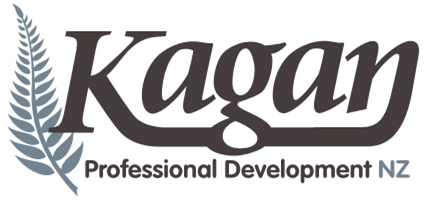
“Cooperative learning engages every student while traditional instruction engages a select few. Why would we consciously elect to engage just our elite students when we can just as easily engage every mind in the classroom?”
-
THE INSTRUCTIONAL REVOLUTION
What we teach has changed. Sources of information have changed. The jobs for which we must prepare our students have changed. The world is rapidly changing. It is time we change the way we teach. Traditional instructional strategies prepare our students for the world that was. Interactive structures prepare our students for the world that will be. The instructional revolution is inevitable.
-
KAGAN STRUCTURES - RESEARCH & RATIONALE
In this article, I have provided some of the research and rationale for Kagan Structures. I firmly believe the structures are not just one more trick for boosting achievement and not just one more exciting passing fad among educators. They are a revolutionary approach to instruction which empowers any teacher to be successful at the awesome task of educating for democracy in the 21st century.
-
KAGAN STRUCTURES ARE BRAIN-FRIENDLY
To a remarkable degree, systematic use of Kagan Structures implements the most important principles of brain-based learning. Without going into a detailed analysis of the underlying brain structures and functions, in this article I point out how Kagan Structures are aligned with the seven most important principles of brain-based learning. Kagan Structures are aligned with the simple fact that our brains are emotional.
-
KAGAN STRUCTURES FOR THINKING SKILLS
Thinking skills are an essential, if not the single most important element of a good 21st century curriculum. Like a muscle that atrophies following disuse, thinking skills taught as content and then dropped to make time for new content do not become well-developed, ongoing processes. Thus, the Kagan Structures are powerful tools to help us reach our goal of preparing students with the thinking skills they need to successfully navigate and thrive in the 21st century—a century characterized by a flood of information and an exploding change rate.
-
EXCELLENCE & EQUITY
PROVEN METHODS MEET THE CHALLENGES We have in our hands simple yet powerful tools proven to accelerate both excellence and equity. We have a research-proven, school-tested solution to educational recovery. To revolutionize educational outcomes we need only to invest in our teachers. We need only to train our teachers in proven instructional strategies and create ongoing support for their implementation…why would we choose educational practices that engage only some learners? Why would we call on one student when in the same amount of time, we can call on all students?
-
STUDENT BOREDOM
FREQUENT, DEVASTITING & PREVENTABLE Very often students are bored in class. The consequences of student boredom are devastating for learning as well as for student liking for school, class, content, and teacher. As educators, we have a choice: We can continue to use traditional instructional strategies that foster disengagement, boredom, and increased achievement gaps, or we can implement instructional strategies that produce equal and frequent engagement and result in a host of positive consequences.

